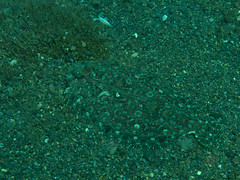Wow! I was browsing the Photoshop User magazine and came across a comment in the Photoshop Q&A that addressed the question of “what is pixel bender?” I’d love to say that I knew exactly what it would do and that I carefully considered the requirement to download and install this Photoshop extension based on exhaustive research and careful consideration. Unfortunately I just thought the name sounded cool, and decided to see what it was.
Photoshop User magazine and came across a comment in the Photoshop Q&A that addressed the question of “what is pixel bender?” I’d love to say that I knew exactly what it would do and that I carefully considered the requirement to download and install this Photoshop extension based on exhaustive research and careful consideration. Unfortunately I just thought the name sounded cool, and decided to see what it was.
I reached the Pixel Bender Technology Center at Http://www.adobe.com/devnet/pixelbender.html, and read that “Adobe Pixel Bender technology delivers a common image and video processing infrastructure which provides automatic runtime optimization on heterogeneous hardware.” (Is that English? What does that mean? ) I browsed around on that page that seemed to have nothing to do with what I like to do in Photoshop, with lots of references to Flash and other Adobe products.
I liked the blurb on Programing in Pixel bender that promises: “Low learning curve: Pixel Bender offers a small number of tools that are sufficient to write complex image-processing algorithms. Learning Pixel Bender is easier than learning C/C++ and each application’s plug-in SDK. You do not need to know any graphics shading language or multithreading APIs.” I learned many years ago that anything do with computers with the word Simple, or Easy wasn’t. This sounded like more of the same. Undeterred by an entire page devoted to a product with out explaining what that product does or is in anything resembling english, I decided to download and install it. After all, it would not have been in Photoshop User, if I wasn’t meant to use it, would it?
that promises: “Low learning curve: Pixel Bender offers a small number of tools that are sufficient to write complex image-processing algorithms. Learning Pixel Bender is easier than learning C/C++ and each application’s plug-in SDK. You do not need to know any graphics shading language or multithreading APIs.” I learned many years ago that anything do with computers with the word Simple, or Easy wasn’t. This sounded like more of the same. Undeterred by an entire page devoted to a product with out explaining what that product does or is in anything resembling english, I decided to download and install it. After all, it would not have been in Photoshop User, if I wasn’t meant to use it, would it?
I downloaded the product and tried to apply it to a photo, and got a “Image too large” error. I tried different formats and different photos and got the same error over and over again. Finally I resorted to reading the README file that came with the download, but didn’t find anything helpful there. As a last resort, I googled the error, and immediately figured out that I had to update my video driver to be able to use the graphics processor mode for this filter in CS5. Sounds easy, doesn’t it, just update the driver and get right to the play time. Two hours later, multiple downloads and installation attempts and much frustration, finally the driver update was complete. I opened my first file, and opened the photoshop filter, selected Pixel Bender, and chose Oil Paint. The image jumped to life as the filter applied. This effect is great and worth the effort!
This filter uses the graphic processor on the video card to process the effects, and there is a whole gallery of various filters for this product. My favorite so far is the oil paint which allows you to add highly textured stylized brush strokes to an image. The results have been very cool.
More as I explore some of the other offerings from the Adobe sharing site.
Continue reading






